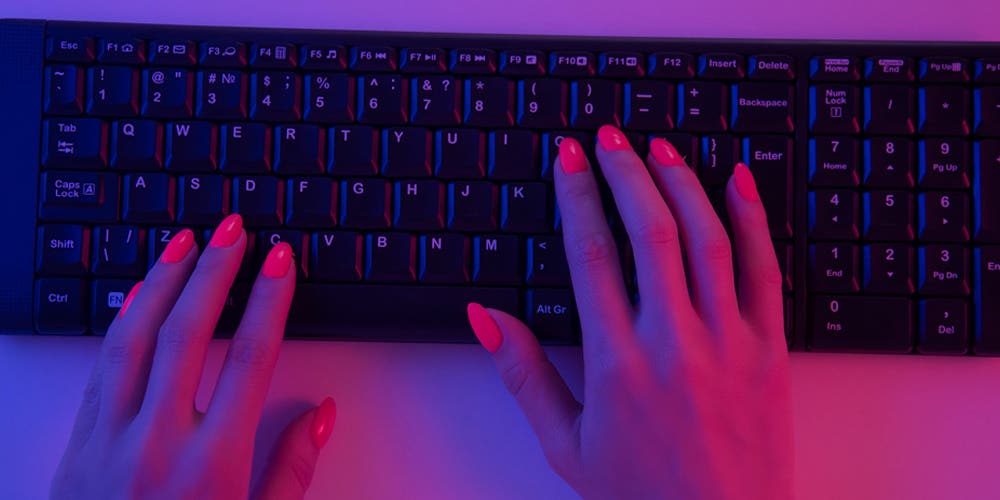与 Ava 聊天 - 您的人工智能业务顾问
大家好,我是 Ava,您的 AI 指南,可帮助您增强业务!
无论您已经在经营一家企业还是梦想创办一家企业,我们都会用AI赋能威客帮助您将愿景变为现实。分享您的业务目标,我们将共同创建一个项目,供我们才华横溢的威客竞标。让我们让您的愿景成为现实!
我已经有一份事业
我要创业
将对话发送到您的电子邮件时出现问题。请稍后再试。
您每小时只能保存一次对话。请稍后再试。
你们的谈话太短了。继续与 Ava 聊天以启用保存功能。
Are there really seven colors in the rainbow?
We demystify the colors in the rainbow, explain how they got there and tell you exactly how many colors there are.
2021年5月18日 • 阅读需9分钟

Content creator - writing and photography
复制到剪切板失败,请修改权限后重试。
复制到剪贴板。

In school we’ve learned there are seven colors in the rainbow. They go under the acronym ROY G BIV which stand for:
Red
Orange
Yellow
Green
Blue
Indigo
Violet
We’ve never questioned it and our life has run smoothly under the safety-blanket of this certainty.
After a passing shower, we’ve observed the rainbow colors in order, always the same. It’s not like one day Red was too tired to lead the charge, or Violet was late and didn’t make it to complete the arch.
They were all there and the color order was always the same. That’s reassuring, isn’t it?
But it’s all going to change soon. Because this article will show that, yes it’s true, the rainbow colors are seven. But, technically, there are more than that.
Is your mind going like this right now?

Not yet? Let me try again.
Did you know birds can see nine colors?
Crazy, eh?
It all has to do with the way colors are perceived. But wait, there’s more - in this article you will:
Dive into the science of colors and understand how they are created.
Discover why there are two different color models
Find out how our eyes see colors - our biology is amazing!
Go back in history to understand how great minds of the past tried to solve the color enigma.
Be able to finally answer the question: how many colors are there in the rainbow?
The science of colors
Let’s start with this: colors are different components of light.
That’s easy for anyone to understand. We're all familiar with this album cover. If you're not, as I might show my age here, I'm sure you're familiar with how a ray of light divides into different colors when it goes through a prism.

Now, light is nothing more than a flow of small particles called photons . They are a type of radiation - if you want to get a tad technical you can think of radiation as molecules in vibration. Or waves, such as heat, radio and microwaves, which all sit on a spectrum.

Now, out of all the waves on this spectrum, our eyes can only see a small portion of them. That’s called the “Visible spectrum”.
“But why is that?” I’m hearing. Thanks for the question. I’ll answer it pronto.
Our eyes’ retinas have photoreceptor cells which are called “cones”, because of their shape. As suggested by the biological term, these cells can receive photons and, through a complex metabolic process, convert them into signals for the brain. These signals are exactly what we perceive as colors.
Our eyes have three types of photoreceptors, each capable of decoding a certain photon or light frequency. Put simply, one type of cone sees Red, another one sees Green, and the third one sees Blue.
Hang on a second, so if we only have three types of photoreceptors each capable of “detecting” one color, where are the other four colors from the rainbow (and the spectrum) coming from? And where do the other colors like Brown and Black come from?
Let’s answer the first question.
Our cones don’t just perceive Red, Green and Blue in isolation. They can also see how the Red, Green and Blue photons blend with each other in different proportions. This explain where all colors of the rainbow come from:
Red - not combined with other colors
Orange - a combination of Red and Green
Yellow - a different combination of Red and Green
Green - not combined with other colors
Blue - not combined with other colors
Indigo - a combination of Blue and Red
Violet - a different combination of Blue and Red.
As you can see, we’ve just illustrated how additional colors can be created by “mixing” Red, Green and Blue together.
This also explains why birds, which have four types of photoreceptors, can technically see nine colors. And one of these colors sits in the UV spectrum!
We’re finding some answers. But you might want to know more, especially if you’ve heard of the additive vs subtractive model; different sets of primary colors for print and for screen; RGB and CMYK; etc. It can be very confusing, but we can explain it all, don’t you worry.
Additive VS subtractive color models
The reason why we have two color models is that colors behave differently depending on their chemical composition. Another way to say this is that different models apply to different types of objects.
Objects that emit light, such as TV, computer screens or projectors work in line with the additive model.
As the name of this model suggests, when you add the primary colors (Red, Green, and Blue) to each other, secondary colors are created.
This image shows what happens when you project three beams of light on a white wall.

Notice how Yellow, Purple and light Blue are created at the intersection of the three beams of light. And when the three primary colors perfectly overlap, they produce transparent white light. This process is very similar to the one you see when light is refracted through a prism, or in a rainbow.
Now this is the case of “colored light”, but what happens when we deal with material colors, such the ones used by painters or by our printers, from the most common to the large industrial ones?
We go in the realm of subtractive colors, so called because they reflect less light when they are mixed (in other words, certain wavelengths are absorbed, or subtracted from what we see). Here is an example that clarifies what we mean.
Painters, or kids in school, take the subtractive primary colors (Blue, also called Cyan; Red, also called Magenta; and Yellow) and mix them together to create the other colors.
As the colors are progressively mixed, the light gets absorbed, creating colors that are gradually darker and duller. See why it is called “subtractive”? Now you also understand why mixing all colors in equal proportions results in the color Black.

Notice that I’ve used the words “primary colors” for both models. Is this a contradiction? Not at all. The two different systems have two different sets of primary colors. In both cases these are the colors that cannot be made by “mixing” the other colors (whether they are in the form of light or paint pigments).
The other cool thing to know is that there is a deep correlation between the two models. Consider the below:
Cyan absorbs Red
Magenta absorbs Green
Yellow absorbs Blue
As you can see CMY (Cyan, Magenta and Yellow) mirror RGB (Red, Green and Blue)!
And what about K, the Black that you usually see next to the primary colors when it comes to our printers? That’s exactly the reason it’s there. With the advancements of the printing techniques, we have learned that a fourth line of color gives the best results in reproducing color shades, tints and nuances.
To recap the two models:
Additive Color Model:
Used for objects emitting light.
TV, computer screens, projectors (and our favorite ones, rainbows).
Creates colors by adding light.
The more light sources are added, the brighter and closer to White the colors become.
Primary colors: Red, Green, Blue.
Subtractive Color Model:
Used for objects reflecting light.
Paint, print and objects.
Creates colors by mixing pigments or ink and absorbing light.
The more pigment or ink is added, the darker and closer to Black the colors become.
Primary colors: Cyan, Magenta, Yellow (what in primary school we learn as Blue, Red and Yellow).
And if you really want to delve into the subject, check out this pretty cool article on primary colors .
Feels like we know a bit more about the science of colors, doesn’t it? Now we’re ready to go deeper and find out if there really are seven colors in the rainbow.
How many colors are in a rainbow?
Look at a rainbow closely.

First, take a moment to admire one of Nature’s masterpieces. Isn’t it incredible?
Now, looking at the rainbow closely, you might realize there’s actually more than seven colors.
That’s because each color blends into the other gradually. This creates many more color combinations - you can call them color graduations, or hues.
So why do we say there are only seven colors in the rainbow?
Who settled for seven colors and picked exactly those, when there are so many nuances? Indigo and violet, I’m looking at you!
To find the answer, we need to go back to Newton’s times and even before that, to ancient Greece. We’ll even take a detour and see what the Vedic tradition says on the topic. Sound good?
Ancient Greece and the number seven
Pythagoras, the greek philosopher from the 6th century BC, believed that numbers were intrinsically connected to both the physical and the metaphysical worlds.
They represented means to investigate and interpret the physical dimension, but were also a way to access the universal truths.
Pythagoras divided creation into planes or spheres, and assigned to each a tone, a harmonic interval, a number, a name, a form and a color.
He discovered that the seven musical notes could be expressed as mathematical equations. He also observed that in nature, the number seven was a recurring number.
His influence on the classical world, and in turn on our culture, can be seen in the many concepts categorized with the number seven: the Seven Days of the Week, the Seven Wonders of the World, the Seven Daily Sins, etc.
After Pythagoras, Aristotle developed the first known color theory. He suggested all colors came from light and darkness (White and black) and linked them to the four elements: water, air, earth, and fire.
His theory has been universally accepted for centuries until Newton came along.

Isaac Newton
The English physicist and mathematician Isaac Newton (1643–1727) was the first to approach colors from a scientific point of view. In a series of experiments with sunlight and prisms, he showed that clear white light comprised seven visible colors.
But Newton didn't stop there. He tried to demonstrate the connection between colors and the seven musical notes.
You could see how he was influenced by Pythagoras in this belief. In fact, Newton initially talked about only five colors in the spectrum: Red, Yellow, Green, Blue and Violet.
After considering Pythagoras’s theory, Newton decided that there should be a perfect match between music and colors and he added Orange and Indigo to the list.
The link between colors and sounds
Throughout the centuries, philosophers, scientists, writers and musicians have searched for the connection between musical notes and colors, as a key to access Nature’s universal principles.
They all tried to prove that white light was made of seven colors:
The Russian composer and pianist Scriabin thought that each note in the octave could be associated with a specific color.
Debussy and Wagner also researched the interrelation between music and color.
The Rosicrucian Order identified exact Hertz frequencies for notes and colors.
The philosopher Charles Fourier in his “Théorie de l'Unité Universelle” associated colors to musical notes and metals.
However, someone took a different position from Newton and the great minds above-mentioned. His name is Goethe .
Known for his poetry and prose, Goethe dedicated himself to the topic and in his “Theory of Colors” showed how colors cannot be measured scientifically, since they are subjectively perceived by different people.
Colors and Spirituality
Let’s move on to the 19th century's occultist master Philippe from Lyon, France. He believed that sounds and corresponding colors (carried through light), can influence the different parts of the body:
Do (Red) excites the brain and acts on the stomach and intestines.
Re (Orange) acts on the stomach, abdomen and intestines.
Mi (Yellow) impacts the heart and spleen.
Fa (Green) can contract the diaphragm.
Sol (Blue) acts mainly on the upper part of the organs and on the arms.
La (Indigo) can give tremors (heart and cardiac region).
Si (Purple) acts directly on the heart itself.
This might not hold scientific truth, but if we look at the Indian Vedic tradition, here are our seven colors again, associated with the seven chakras.
Muladhara, the Root Chakra: Red
Svadhishthana, the Sacral Chakra: Orange
ManiPura, the Solar Plexus Chakra: Yellow
Anahata, the Heart Chakra: Green
Vishuddi, the Throat Chakra: Blue
Ajna, the Third Eye Chakra: Indigo
Sahasrara, the Crown Chakra: Violet
Call it a coincidence, but it’s pretty cool to see how philosophy, science and spirituality all converge on this topic.

The answer to how many colors in the rainbow.
Imagine rain droplets as a multitude of micro-prisms that come together to break the rays of light into its constituting parts.
That’s exactly what happens when we look at the rainbow and admire its colors. If we look at that spectrum carefully, we notice that in between the famous “seven colors of the rainbow”, there’s in fact many more.
Influenced by Pythagoras and the classical world, our culture has upheld the number seven as a means to organize knowledge and connect us to Nature’s universal truths.
Goethe and others challenged this concept - and perhaps today science proves them right.
There are indeed more than seven colors in the rainbow, but we keep referring to these seven. Maybe it’s out of habit, or maybe because it’s easier that way.
I might just be influenced by our culture, but seven sounds like a good number, doesn’t it?
告诉我们你需要做什么
输入您的项目名称
相关故事
与我们的Technical Co-Pilots进行沟通来获得项目帮助
专为您推荐的文章

How to hire a freelance writer and build an effective content marketing strategy. Content is your most profitable marketing investment, make it count.
12 min read

Not every graphic designer can pull off a great logo design. Follow these 6 tips to ensure your logo sparkles and clients keeps coming back for more.
6 min read

Web design is a unique beast in the field of graphic design, so you'll need some unique tools. We've found the 7 best web design tools you need.
3 min read

What exactly does a visual designer do and should you hire one? In this post we'll define the role and explain how they differ from graphic designers.
5 min read
谢谢!我们已通过电子邮件向您发送了索取免费积分的链接。
发送电子邮件时出现问题。请再试一次。
加载预览
授予地理位置权限。
您的登录会话已过期而且您已经登出,请再次登录。




